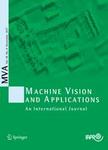版权所有:内蒙古大学图书馆 技术提供:维普资讯• 智图
内蒙古自治区呼和浩特市赛罕区大学西街235号 邮编: 010021

作者机构:Jiangsu Ocean Univ Coll Marine Engn Lianyungang 222005 Peoples R China Jiangsu Ocean Univ Coll Mech Engn Lianyungang 222005 Peoples R China
出 版 物:《MACHINE VISION AND APPLICATIONS》 (计算机视觉与应用)
年 卷 期:2024年第35卷第4期
页 面:63-63页
核心收录:
学科分类:0808[工学-电气工程] 08[工学] 0812[工学-计算机科学与技术(可授工学、理学学位)]
基 金:National Natural Science Foundation of China (NSFC)
主 题:Unmanned surface vessel MCSSNet Multi cascade Semantic segmentation algorithm Deep learning
摘 要:To achieve real-time segmentation with accurate delineation for feasible areas and target recognition in Unmanned Surface Cleaning Vessel (USCV) image processing, a segmentation approach leveraging visual sensors on USCVs was developed. Initial data collection was executed with remote-controlled cleaning vessels, followed by data cleansing, image deduplication, and manual selection. This led to the creation of WaterSeg dataset, tailored for segmentation tasks in USCV contexts. Upon comparing various deep learning-driven semantic segmentation techniques, a novel, efficient Muti-Cascade Semantic Segmentation Network (MCSSNet) emerged. Comprehensive tests demonstrated that, relative to the state of the art, MCSSNet achieved an average accuracy of 90.64%, a segmentation speed of 44.55fps, and a 45% reduction in model parameters.